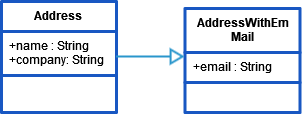|
Syntax |
|
|
|---|---|---|
|
Semantics |
Takes an JSON string ( By default, the following mapping rules apply:
For more mapping details refer to JSON Parsing and Composing Rules. |
|
|
Substitutables |
|
A JSON document as String. |
|
|
Target object, can be any object. |
|
|
|
String literal. |
|
|
Examples |
The action script below creates an object of type Address. An output object flow state named myAddress of type Address needs to be defined in the activity diagram. The example below shows how to specify the xUML type at runtime, e.g. if using a derived class. JSON

The xUML type is declared by the attribute " |
|
For more information on JSON refer to the JSON Homepage or to RFC 4627.
Related Content
Related Documentation:
